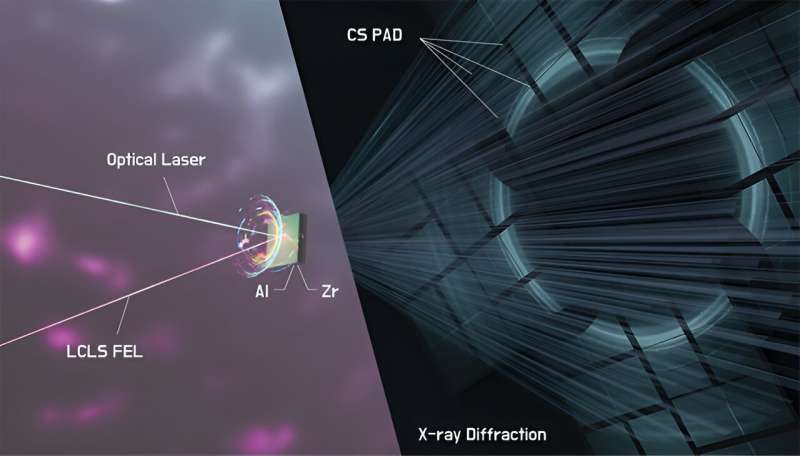Phys.org August 7, 2024
A team of international researchers (Stanford University, Lawrence Livermore National Laboratory, Purdue University, Carnegie Mellon University, SLAC National Accelerator Laboratory, Germany) used diffraction patterns from x-ray pulses to investigate the temperature evolution of laser-shocked Al–Zr metal film composites at time delays ranging from 5 to 75 ns driven by a short-pulse laser. They found significant heating of both Al and Zr after shock release. A conventional hydrodynamic model did not fully account for the measured temperature increase, which suggested that other strength-related mechanisms (such as fine-scale void growth) could play an important role in thermal responses under shock wave loading/unloading cycles. Their results suggested that a significant portion of the total shock energy delivered by lasers became heat due to defect-facilitated plastic work, leaving less converted to kinetic energy. According to the researchers high post-shock temperatures may induce phase transformation of materials during shock release. Another implication for the study is the preservability of magnetic records from planetary surfaces that have a shock history from frequent impact events… read more. Open Access TECHNICAL ARTICLE

Femtosecond X-ray diffraction of laser shocked aluminum-zirconium metals. Credit: Ji-In Jung/Stanford